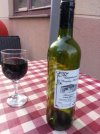AlexanderCook
New Member
- Time of past OR future Camino
- June 2024
Good morning, all:
I'll be starting my first-ever Camino (and first trip to Europe, actually) in one month. I'd appreciate any and all advice regarding the price(s)/price range for lunches on the Sarria to Santiago de Compostela route as I'm trying to budget accordingly. (I've previously read that in years past the top end for the menu del dia, for example, is 20 euros, but am not sure how accurate that is now.) I should add that I anticipate buying a glass of alcohol with lunch, so that will obviously add to the cost as I believe that's not included in the set price(s).
On a side note, is the menu del dia truly better than the pilgrim's menu and worth the additional price?
Thank you for any and all advice. Buen camino.
I'll be starting my first-ever Camino (and first trip to Europe, actually) in one month. I'd appreciate any and all advice regarding the price(s)/price range for lunches on the Sarria to Santiago de Compostela route as I'm trying to budget accordingly. (I've previously read that in years past the top end for the menu del dia, for example, is 20 euros, but am not sure how accurate that is now.) I should add that I anticipate buying a glass of alcohol with lunch, so that will obviously add to the cost as I believe that's not included in the set price(s).
On a side note, is the menu del dia truly better than the pilgrim's menu and worth the additional price?
Thank you for any and all advice. Buen camino.

























